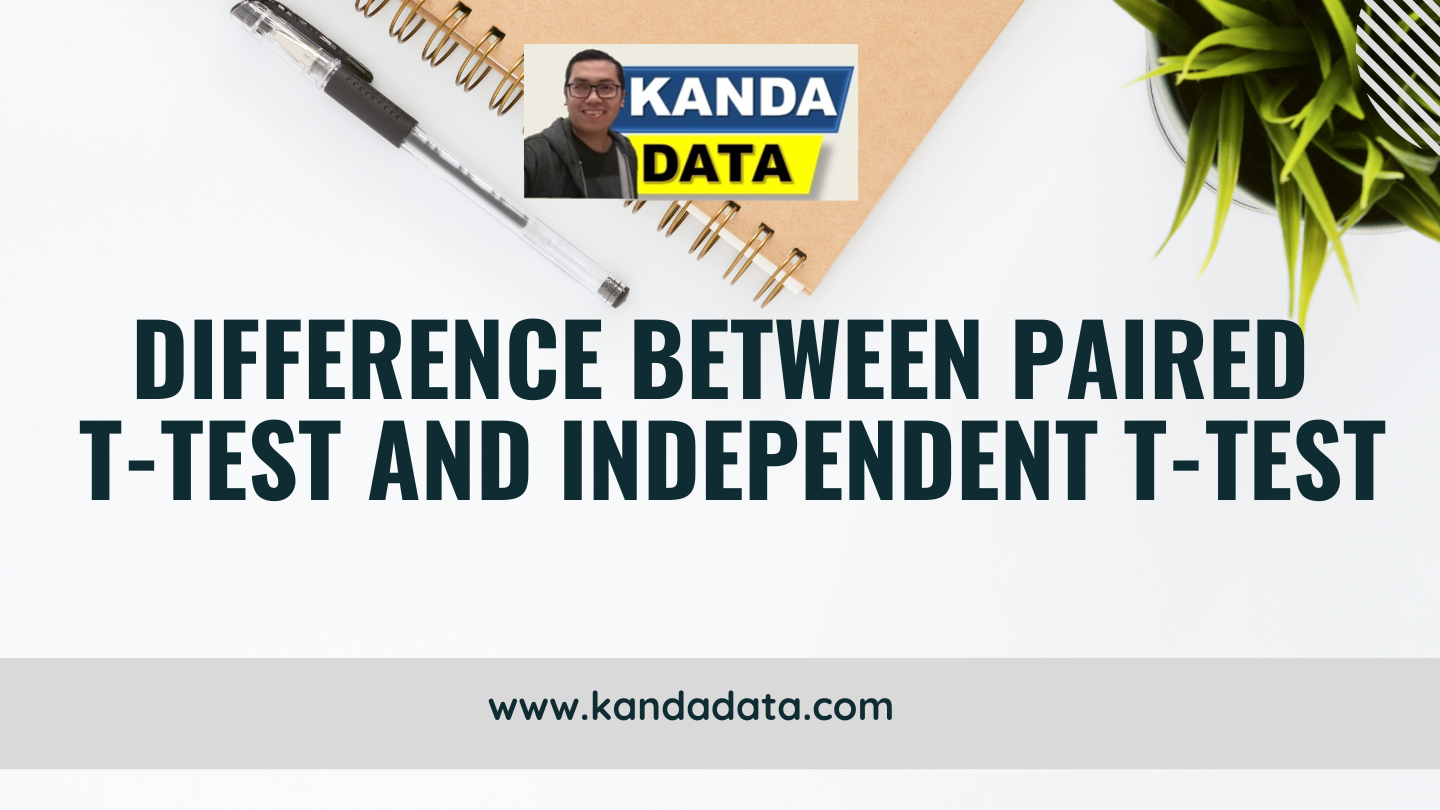Blog
Difference between Paired t-test and Independent t-test
A deep understanding of the difference between paired t-test and independent t-test is crucial for researchers. A strong grasp of both methods is key to making informed decisions based on analyzed data. Paired t-test and independent t-test are used to determine the difference in means between two sample groups.
A clear understanding of the essential differences between these methods will provide a solid foundation for interpreting statistical analysis results, enabling more accurate and effective decision-making. Therefore, in this article, Kanda Data will discuss the difference between paired t-test and independent t-test.
Paired t-test
The paired t-test is a statistical method used to compare the means of two related sample groups. This method is commonly used when the observed data from two groups come from the same subjects, such as before and after a treatment or in experimental situations where subjects are measured twice with the same variable.
The underlying theory behind the paired t-test is to compare the difference between data within the same group to a mean of zero, and then assess how significant that difference is relative to the data variation.
An example of using the paired t-test is in studying the effectiveness of a teaching program where students’ average grades are measured before and after the implementation of the program. Suppose a study aims to evaluate whether there is a significant improvement in students’ mathematics grades after participating in an additional program for one semester. Data on students’ mathematics grades before and after the program are measured, and then the paired t-test is used to determine if the difference is statistically significant.
In the analysis process, the first step is to calculate the difference between each pair of data. Then, the average of these differences is calculated, along with the standard deviation of these differences. The t-test is then used to determine if the average difference is statistically significant. If the p-value resulting from the paired t-test is smaller than the set significance level (usually 0.05), it can be concluded that there is a significant difference between the two sample groups.
Independent t-test
The independent t-test is a statistical method used to compare the means of two sample groups that are not related to each other. This method is often used when the observed data from two groups come from different subjects, and the difference between the groups is tested to determine if it is statistically significant.
For example, a researcher wants to evaluate whether there is a significant difference in the average math test scores between students from two different schools. The math score data from the two schools are independently collected, and then the independent t-test is used to determine if the difference between the average scores is statistically significant.
In the analysis process, the first step is to calculate the means and standard deviations of each sample group. Then, the independent t-test is used to compare the means of the two groups. The result of this t-test indicates whether the difference between the two sample groups is statistically significant, considering the set significance level.
If the p-value resulting from the independent t-test is smaller than the set significance level, it can be concluded that there is a significant difference between the two sample groups. This provides important information in interpreting the data and making decisions related to the differences between the tested groups.
Based on the information provided earlier, it can be concluded that the core difference between paired t-test and independent t-test lies in the relationship between the tested sample groups. Paired t-test is used when there is a relationship or connection between two sample groups, while independent t-test is used when two sample groups are not related or come from different subjects.
Different prerequisite assumptions also play a significant role, where both paired t-test and independent t-test require normally distributed data. By understanding these differences, researchers can choose the appropriate method for their statistical analysis situation to ensure accurate and valid results. This concludes the article that Kanda Data can provide on this occasion, hoping it will be beneficial for you.
